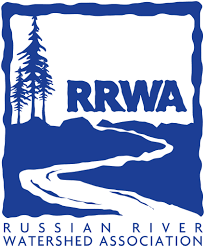Welcome 2021 — a new year that comes with new resolutions and reflections on the past year. For many, the past year dramatically changed how we live our lives and where we live it. Those lucky enough to have a garden, lawn or greenspace have found a place for gatherings, play and relaxation. However, a lawn can have unintended environmental consequences, especially in California’s semi-arid climate where it needs frequent watering and provides little biodiversity for native species to thrive.
The following simple steps can be taken to minimize your lawn acreage by rewilding the garden, reducing water use and promoting native pollinators all in your backyard.
Capture Rainwater: With California currently in the midst of its rainy season, installing a rain barrel is an easy way to capture the water for your future use. All it requires is a large rain barrel with a spigot on the bottom, a lid with a screen to block debris from entering the barrel, and a small modification to your existing gutter system. An estimated 600 gallons can fall on a 1,000 sq. ft. roof during a one-inch rain providing a large reservoir for irrigation during the drier seasons helping to cut water bills. This also prevents debris from your roof flowing into and potentially polluting storm drains.
A natural alternative to this rainwater capture system is a rain garden. This is a rainwater capture area downhill of your gutter that slows the flow of the water and allows it to percolate into the soil before it runs off into the street.
Transform Your Lawn: Re-wilding your garden consists of removing parts of your lawn and planting native species adapted to California’s climate in its place. Examples of plants well suited include the perennial Plumbago which produces long lasting brilliant blue flowers, Bush Yarrow, ideally suited for pollinators or the flowering Golden Rain tree which provides welcome shade in the summers. These plants will save you water as they typically have root systems that extend much further into the soil which aids in moisture retention making the species more drought tolerant. Planting these native species also promotes biodiversity encouraging pollinator species to visit and take refuge in your garden.
Compost, Compost, Compost: To keep these new plants healthy, a simple at home compost will foster a fertile, disease free suppressive soil encouraging your new native plants to thrive. To support a healthy compost pile, use a 3:1 ratio of brown to green materials. Brown materials are carbon heavy materials such as dead leaves, plants, cardboard, and newspaper. Green materials are nitrogen heavy materials such as coffee grounds and fruit and vegetable scraps. You can buy a compost bin or keep your compost pile in a shady location, aerating the compost by turning it regularly. If it begins to smell just add more brown materials. More detailed composting guides can be found online in the RRWA handbook.
Building more sustainable gardens and backyards to make Russian River-Friendly Landscapes has been a key project for the RRWA over the last several years. If you are a resident within the watershed you may have seen their Russian River-Friendly signage posted at your Local Park or neighbor’s house. Perhaps you soon will be able to post your own Russian River-Friendly sign.
To get more information on how you can make your yard a Russian River-Friendly Landscape make sure to mark your calendars for the RRWA webinar event on Feb. 2 and Feb. 3 and 6th: Rehydrating the Russian River Watershed: Moving Towards Regenerative Landscapes. To learn more about beneficial landscaping practices and the wide variety of native Californian plants suited to the Russian River Watershed, make sure to read the Russian River Friendly Landscaping Guidelines Handbook









